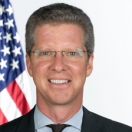
Five years ago, one of the most destructive natural disasters in our nation’s history hit the Gulf Coast. When they hit the coasts of Louisiana and Mississippi, Hurricanes Katrina and Rita took thousands of lives, displaced millions of residents, wiped out hundreds of square miles of coastal land, and inflicted major damage to nearly 300,000 homes.
A half-decade later, Gulf Coast residents are still trying to pick up the pieces. Since taking office in January 2009, the Obama Administration has been working hard to ensure residents are given the tools they need to recover from the hurricanes and rebuild their lives and communities. As a result, $2.43 billion in public assistance funds for recovery that had been stalled for years has been obligated since the beginning of the Administration, with President Obama’s Recovery Act providing billions more.
But the Obama Administration is committed to doing things differently in the Gulf – in two fundamental ways. First, we believe that government should stand with the residents of the Gulf Coast, not in their way. That means cutting through the red tape.
Secondly, we are not only helping the Gulf Coast recover from disaster – but working to revitalize the region and build it back better and stronger.
Since becoming HUD Secretary, I have had the privilege and experience of visiting the Gulf Coast region five times to see the challenges and progress for myself. From my first visit with Secretary Napolitano where we announced millions of dollars in funding to stimulate long term recovery, to volunteering with the St. Bernard Project to help rebuild the homes of two elderly families, it has been extremely important to see the progress we are making and the work that still lies ahead firsthand.
As I prepare to make my sixth trip this week on the 5th Anniversary of the storm, I wanted to share with you some of HUD’s accomplishments so far:
- HUD’s work in the Obama Administration began with the Disaster Housing Assistance Program (DHAP). Shortly after President Obama’s inauguration, I discovered that thousands of families who received assistance through DHAP would see that assistance come to an end without having found permanent housing. Together with our partners in the Administration, we extended this assistance for an additional six months -- allowing displaced families more time to transition to self-sufficiency. By partnering with nearly 350 public housing agencies across the country, we were able to provide temporary housing to over 30,000 families displaced from their homes by Hurricanes Katrina and Rita. Today every DHAP family is accounted for – having already made the transition to permanent housing or well on their way to doing so.
- HUD has also been able to assist displaced Gulf Coast residents through the Homelessness Prevention and Rapid Re-Housing Program (HPRP) under President Obama’s Recovery Act. Under this program, states and communities received grants to help prevent homelessness and provide rapid re-housing assistance to those who are already homeless. Louisiana has received $13.5 billion in funding under HPRP, and Mississippi has received $13.3 billion.
- We have also helped stabilize Gulf Coast communities suffering from foreclosures and abandonment. As part of the 2008 Housing and Economic Recovery Act, Mississippi received nearly $46.3 million under the Neighborhood Stabilization Program (NSP), while Louisiana received $39 million, with an additional $29.7 million competitively awarded to the New Orleans Redevelopment Authority consortium. Indeed, with HUD strongly encouraging local non-profit organizations to help the city target their funds more effectively through technical assistance, Mayor Landrieu has made tremendous progress helping New Orleans cut through the red tape and ensure these funds are helping the neighborhoods that need it most.
- We are also working to rebuild a stronger and more ethical housing authority in New Orleans. I recently appointed a new leadership team to the Housing Authority of New Orleans (HANO), led by David Gilmore. Bringing 40 years of public housing experience, Mr. Gilmore and his team are working to develop new affordable housing in New Orleans, fostering closer relationships with social service providers and expediting assistance to lower income families. At the same time, he is working to ensure that public housing is not only a place for families to find safe, affordable housing but also provides opportunities for those who live there – helping more than 800 New Orleans residents find work.
These accomplishments are just the beginning for a Gulf Coast region still struggling to regain its footing. But as long as we continue to cut through the red tape, listen to the voices of people on the ground and get help to families and neighborhoods that need it most, I have no doubt we will continue to produce results and help the families of the Gulf Coast move from recovery to revitalization.
Shaun Donovan is Secretary of the Department of Housing and Urban Development
Read more from the Hurricane Katrina: 5 Years of Remembering & Rebuilding series.


